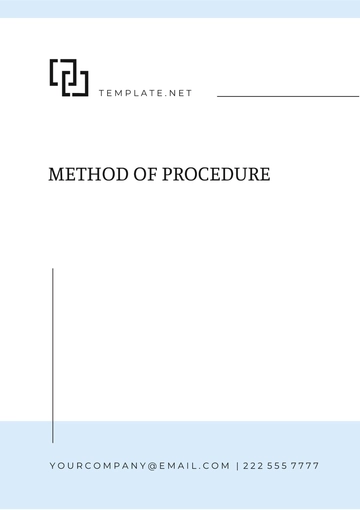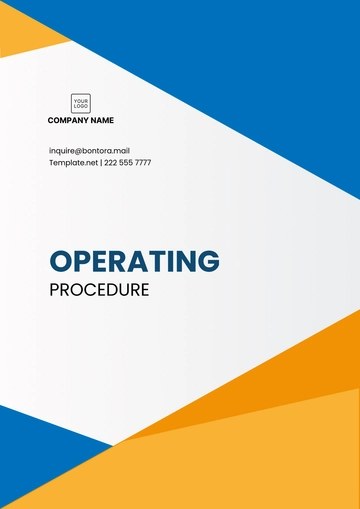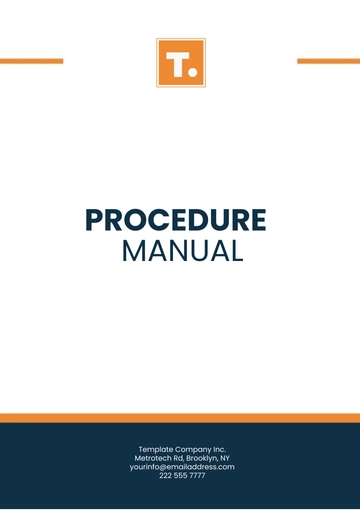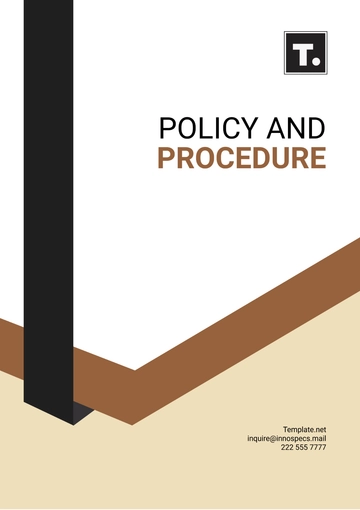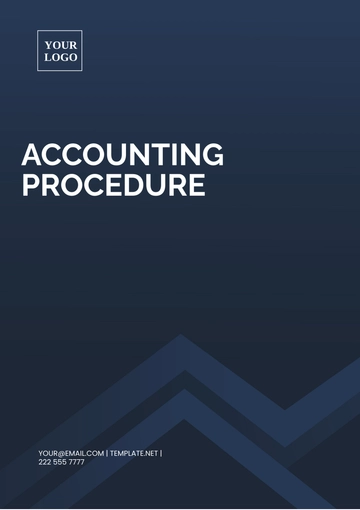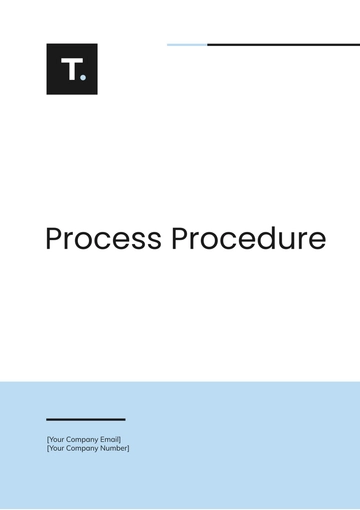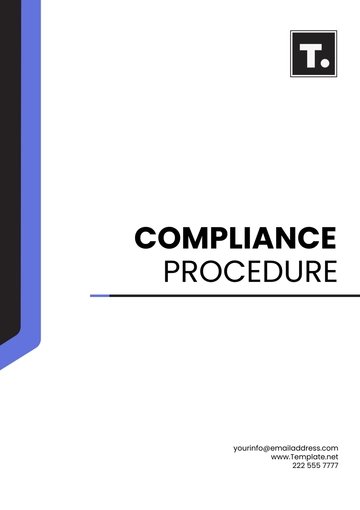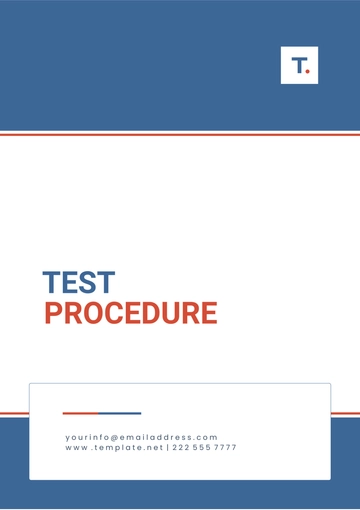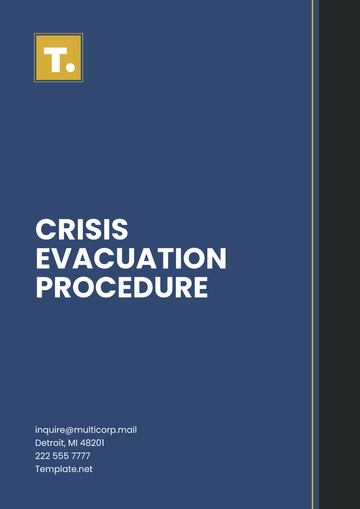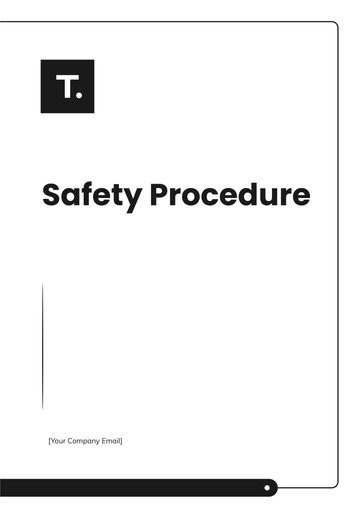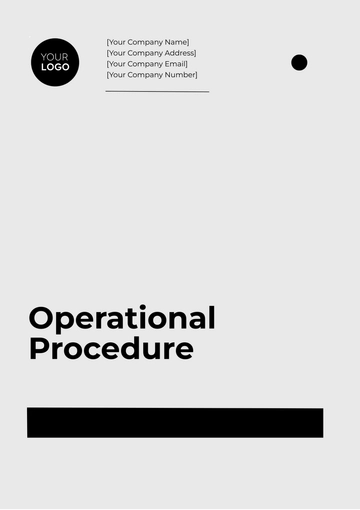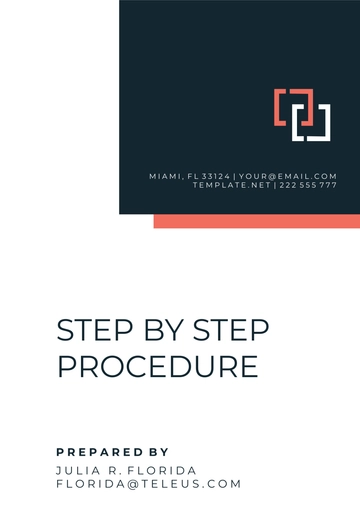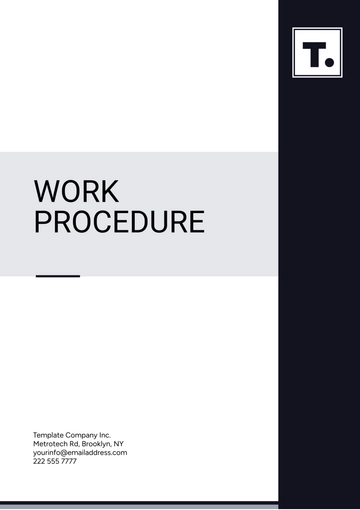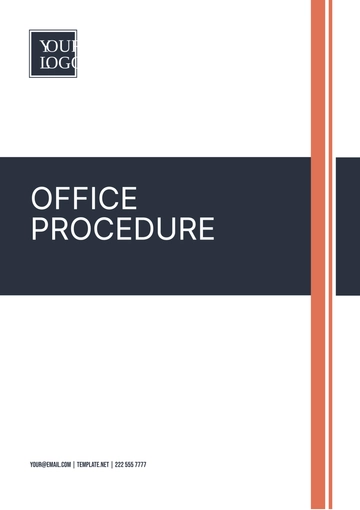Free School Fundraising Procedure
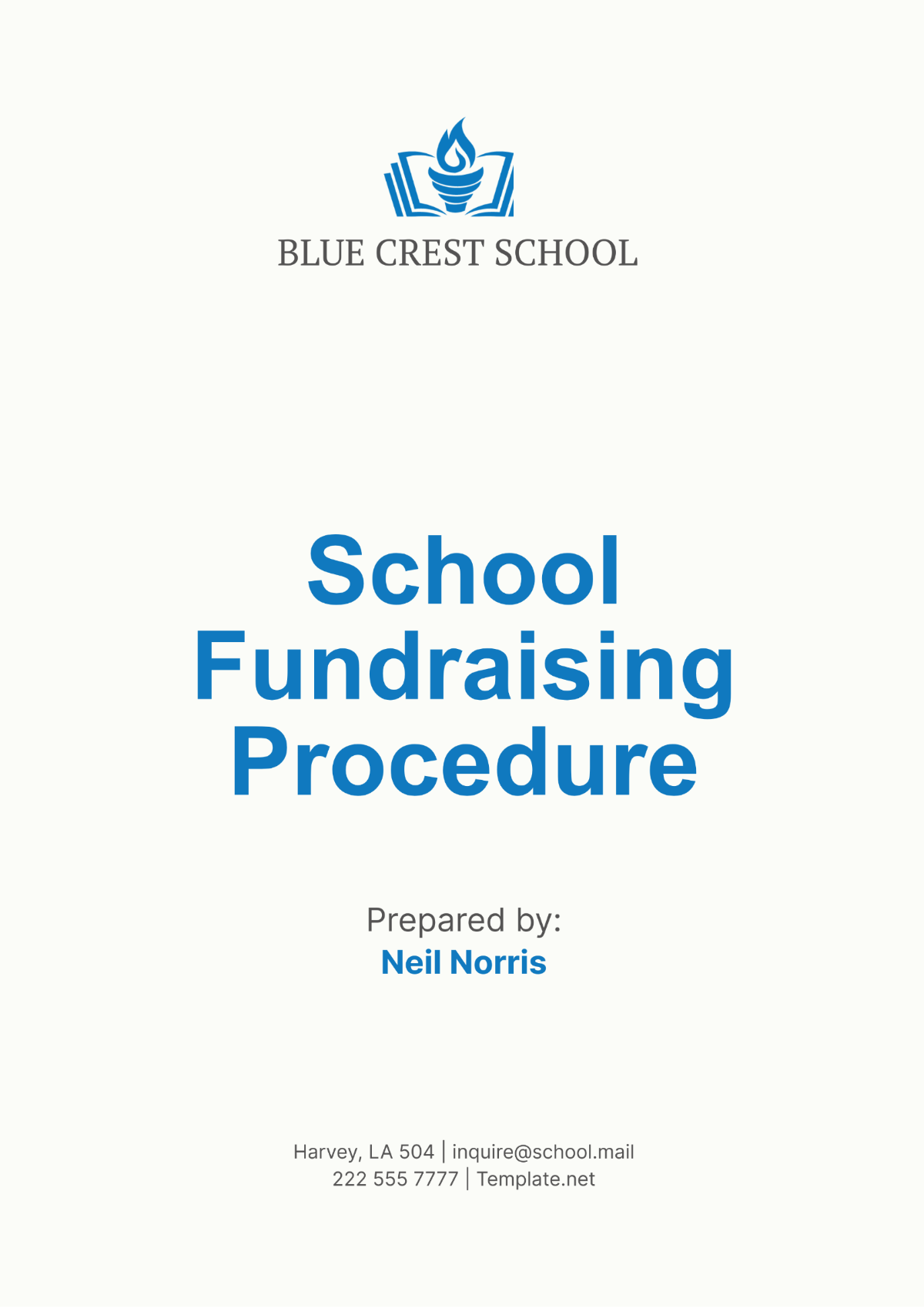
I. Purpose
The purpose of this procedure is to provide a clear, step-by-step outline for planning, organizing, and executing fundraising activities in a school setting. Fundraising is essential for supporting various school programs, extracurricular activities, and improvements to school facilities. By following a structured procedure, schools can maximize the efficiency and effectiveness of their fundraising efforts, ensuring that they meet financial goals and enhance the educational experience for students.
This procedure is designed to ensure that all fundraising activities comply with relevant US laws and regulations, including those related to financial reporting, tax-exempt status, and student participation. Compliance with these regulations is crucial to maintain the school's integrity, avoid legal complications, and ensure the transparency of financial transactions. Additionally, this procedure aims to uphold the ethical standards and values of the school, promoting honesty, accountability, and fairness in all fundraising activities.
Furthermore, the fundraising procedure aims to align with the school's mission and values. Fundraising efforts should not only generate necessary funds but also reflect the educational and community-oriented goals of the school. This includes engaging the school community, fostering a sense of collaboration and school spirit, and promoting initiatives that contribute positively to students' academic and personal development. By following this procedure, the school ensures that fundraising activities are planned and executed in a manner that supports and enhances its overall mission and values.
II. Scope
This procedure applies to all members of the school community, including administrators, teachers, parents, and students, who are involved in fundraising activities. It encompasses all types of fundraising initiatives, such as events, sales, donation drives, sponsorships, and grant applications. By adhering to this procedure, each participant ensures that their efforts contribute to a cohesive and organized approach to fundraising, enhancing the overall effectiveness of the school's efforts to raise funds.
Additionally, this procedure is applicable to both school-sponsored and external fundraising activities conducted on behalf of the school. Whether the initiative is organized by a student club, a parent-teacher association, or an external partner, all activities must follow the outlined steps to ensure consistency, legal compliance, and alignment with the school's mission and values. This comprehensive approach helps prevent conflicts, promotes transparency, and ensures that all fundraising efforts support the school's goals and objectives.
III. Definitions
This section provides clear definitions for key terms used throughout the fundraising procedure to ensure all members of the school community have a shared understanding. These definitions help clarify roles, responsibilities, and the nature of various activities involved in fundraising efforts.
Fundraising Coordinator: The individual responsible for overseeing and managing the fundraising activities.
Donor: An individual or organization that provides financial support to the school.
Event: Any organized activity intended to raise funds for the school.
Sponsorship: A financial or in-kind contribution provided by an individual or organization in support of a specific event or program, often in exchange for recognition.
Grant: A financial award given by a government body, foundation, or corporation to support a specific project or initiative within the school.
Campaign: A coordinated series of activities and efforts designed to achieve specific fundraising goals over a set period.
In-Kind Donation: A contribution of goods or services rather than money, provided by an individual or organization to support the school.
Volunteer: An individual who offers their time and skills without monetary compensation to assist with fundraising activities and events.
IV. Roles and Responsibilities
Effective fundraising requires the collaboration of various members of the school community, each with specific duties to ensure success. The roles and responsibilities outlined here delineate the contributions expected from different individuals, promoting a structured and efficient approach to fundraising efforts. By clearly defining these roles, the school can better coordinate activities, maintain accountability, and ensure that all efforts are aligned with its mission and goals. Understanding and fulfilling these responsibilities will help create a supportive and productive fundraising environment.
Role | Responsibility |
|---|---|
Fundraising Coordinator | Oversees the entire fundraising process and ensures compliance with school policies. |
Principal | Approves fundraising activities and ensures they align with the school's mission. |
Teachers | Support fundraising activities by encouraging student participation. |
Parents | Assist in organizing and promoting fundraising events. |
V. Procedure
Establishing a structured procedure is essential for the success of any fundraising effort. This section outlines the step-by-step process to ensure that fundraising activities are well-planned, effectively executed, and thoroughly reviewed. Following these guidelines will help maximize the impact of fundraising initiatives, maintain compliance with regulations, and foster a collaborative approach among all participants.
1. Planning
The planning phase is crucial for setting the foundation of a successful fundraising activity. This involves identifying clear goals, forming a dedicated committee, and developing a strategic plan with a detailed timeline. Assigning tasks and responsibilities ensures that everyone knows their role and contributes effectively.
Steps:
Identify the fundraising goal.
Form a fundraising committee.
Develop a fundraising strategy and timeline.
Assign tasks and responsibilities.
2. Execution
The execution phase focuses on implementing the fundraising plan. Organizing the event, promoting the activity, and collecting donations are key components. Accurate record-keeping during this phase is vital to ensure transparency and accountability, helping to build trust within the school community.
Steps:
Organize the fundraising event or campaign.
Promote the fundraising activity.
Collect donations and maintain accurate records.
3. Post-Event
After the event, it is important to show appreciation to donors and participants, review the outcomes, and report results. Reflecting on the event’s success and documenting lessons learned can provide valuable insights for future fundraising activities, ensuring continuous improvement.
Steps:
Thank donors and participants.
Review the fundraising outcomes against goals.
Report the results to the school community.
Document lessons learned for future activities.
VI. Checklist for Fundraising Activities
A comprehensive checklist ensures that all critical steps are addressed throughout the fundraising process. Following this checklist can help maintain organization, ensure thoroughness, and increase the likelihood of a successful fundraising activity.
Fundraising goal defined: Clearly state the financial target and specific purpose for the funds, aligning the goal with the school’s needs and mission.
Fundraising committee formed: Assemble a team of dedicated individuals, including administrators, teachers, parents, and possibly students, who will coordinate and oversee the fundraising activities.
Strategy and timeline developed: Create a detailed plan outlining the fundraising methods, activities, and timeline. This plan should include milestones and deadlines to track progress.
Tasks and responsibilities assigned: Delegate specific tasks to committee members based on their skills and availability. Clear roles help ensure accountability and efficient workflow.
Event organized: Plan the logistics of the fundraising event, including securing a venue, arranging necessary permits, and coordinating with vendors. Ensure that all elements are in place for a smooth execution.
Promotional materials created: Develop and distribute promotional materials such as flyers, emails, social media posts, and press releases to raise awareness and attract participants and donors.
Donations collected and recorded: Implement a system for collecting and securely handling donations. Keep accurate records of all contributions, ensuring transparency and compliance with financial regulations.
Donors and participants thanked: Acknowledge and thank donors and participants promptly and sincerely. Expressing gratitude helps build strong relationships and encourages future support.
Outcomes reviewed: Evaluate the fundraising event against the initial goals. Analyze what worked well and identify areas for improvement, using this information to enhance future efforts.
Results reported: Communicate the outcomes of the fundraising activity to the school community. Transparency in reporting builds trust and demonstrates accountability.
Lessons documented: Compile a summary of insights and lessons learned from the event. Documenting these reflections provides valuable guidance for planning and executing future fundraising activities, fostering continuous improvement.
By following this checklist, the school can ensure a structured and efficient approach to fundraising, leading to successful and impactful outcomes.
VII. Approval and Review
To maintain the effectiveness and relevance of this fundraising procedure, it should undergo a regular review and approval process. The school's administration should review and approve the procedure at the beginning of each academic year or whenever significant changes are made. Any modifications to the procedure should be documented and communicated to all stakeholders to ensure that everyone is aware of and adheres to the updated guidelines. This periodic review and approval process help to keep the procedure up-to-date with current practices and regulations, ensuring that fundraising efforts remain efficient, compliant, and aligned with the school's mission and goals.
- 100% Customizable, free editor
- Access 1 Million+ Templates, photo’s & graphics
- Download or share as a template
- Click and replace photos, graphics, text, backgrounds
- Resize, crop, AI write & more
- Access advanced editor
Streamline your fundraising efforts with the School Fundraising Procedure Template from Template.net. This editable and customizable template helps you create detailed and professional fundraising procedures. Editable in our Ai Editor Tool, it offers a user-friendly experience, making it easy to tailor to your specific needs. Maximize your fundraising success with this essential procedure template.



